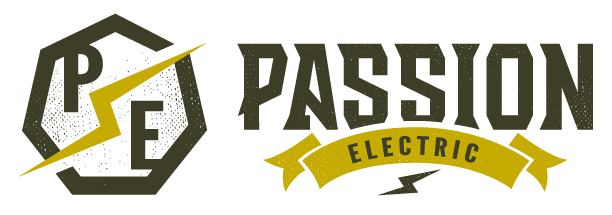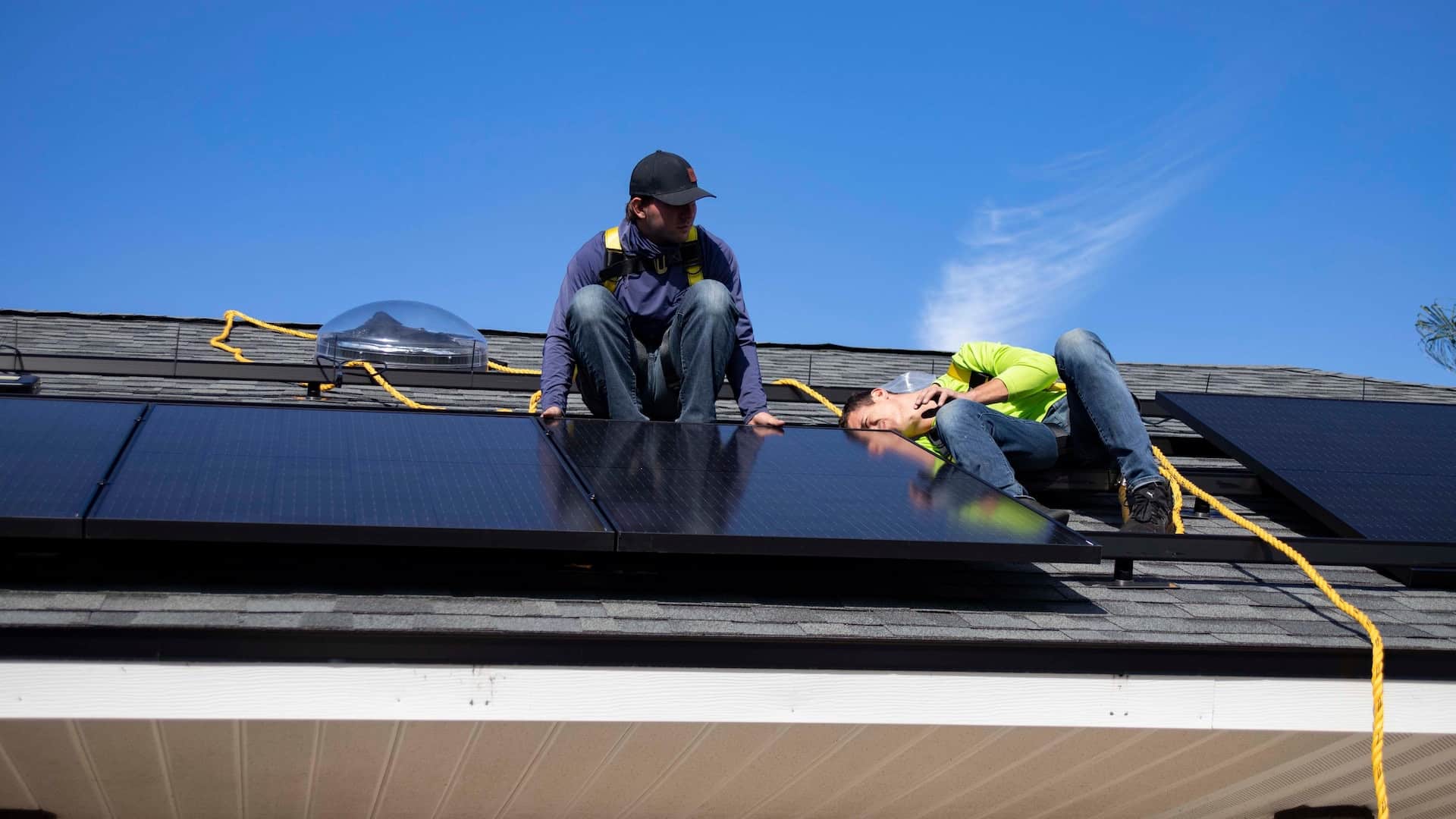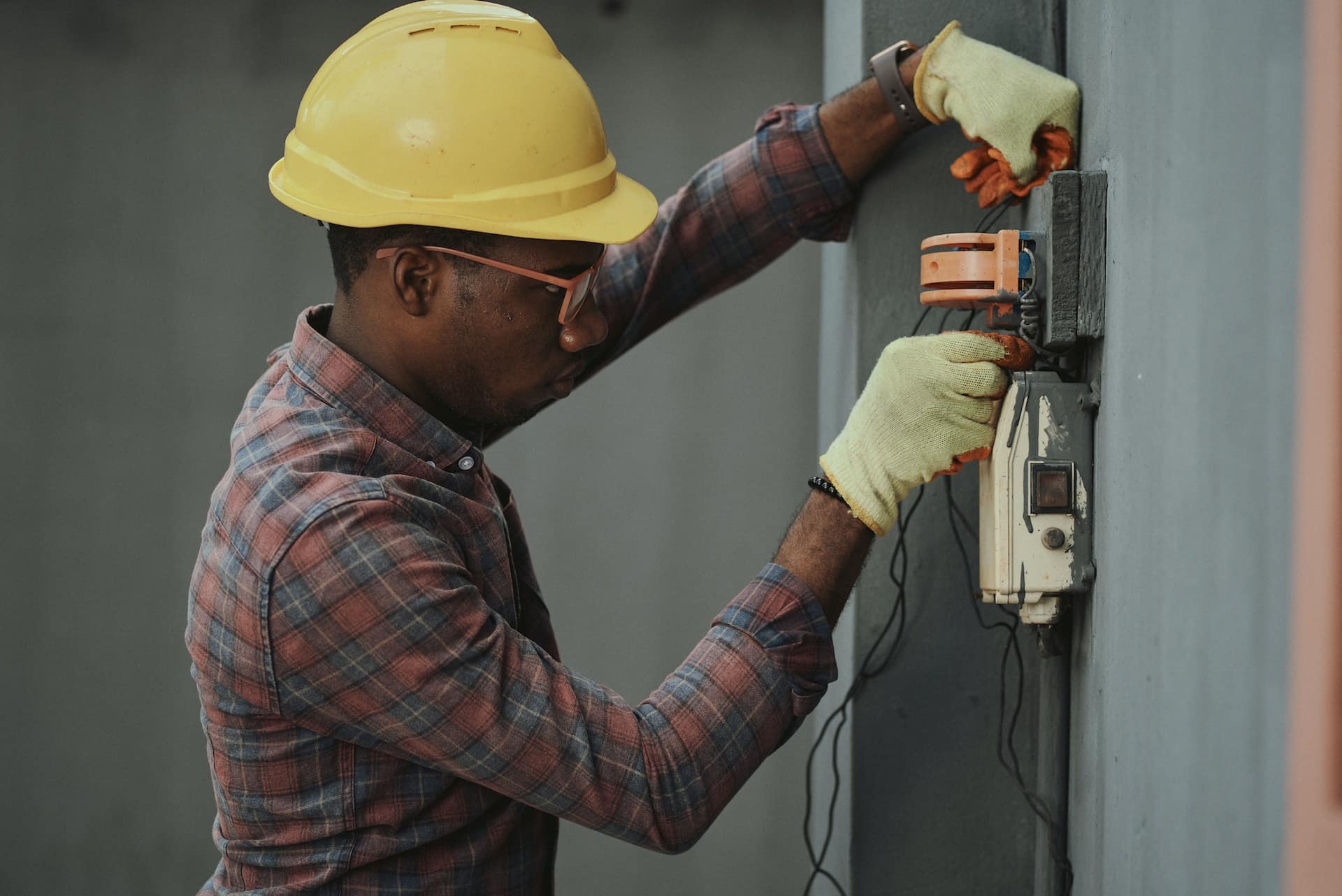Many households are turning to solar energy for valid reasons. It’s more sustainable, cost-effective in the long run, and it helps people feel more secure. But before making the move to solar, it is essential to understand what goes into a solar panel installation cost. In this post, we’ll be looking at how various aspects affect the overall costs of installing these panels so that an informed decision can be made on whether or not they should get installed in your home.
Short Summary
- Solar panel installation costs are determined by system size, type of panels, location, and roof characteristics.
- The national average cost for solar panel installation in 2023 is estimated to be around $20,650 including the federal tax credit.
- Incentives and rebates can help reduce the cost of solar panel installations as well as financing options such as cash purchases or loans/leases/PPAs.
Installation Cost Factors

The cost of solar panel installation is heavily affected by multiple components, such as the size and type of system, location, and characteristics of your roof. By understanding how these factors affect costs, you can choose a better option for your individual solar energy setup that will make it more affordable in the long run.
To explain each aspect, we’ll break down all aspects related to pricing when installing a new solar panel setup on one’s property. We’ll look into elements like system measurements, types of panels used along with where it would be located as well as any features found on one’s roof that may influence pricing too.
System Size
The size of your solar system plays a major role when it comes to determining the price tag for installing solar panels. The reason why this is important lies in how efficient these systems can be at saving money on electricity bills. That’s because companies use energy consumption as an indicator when deciding what kind of setup should go with each individual household.
A more expansive system usually carries heftier upfront costs, but if you’re looking into taking advantage of the long-term benefits such set ups have, then investing in higher wattage models is probably worth considering, due to their lower average cost per watt ratio! Simply put, having extra modules installed will not only give you more bang for your buck right away, but also pay off over time.
Panel Type
Solar panels are an ideal source of renewable energy for households, with a variety to choose from. Monocrystalline solar panels have the highest efficacy ratings but come at a greater price tag – up to $1.50 per watt, polycrystalline solar panels cost between 90 cents and one dollar per watt, and thin-film solar paneling is the most budget-friendly, ranging from 75 cents to 1.10 dollars per watt though they produce lower efficiency rates (from 10%-13%).
Consequently, selecting which type of solar panel you want can significantly influence your total costs as well as system efficiencies – it’s important that all pros and cons be taken into account before making any decisions in this regard.
Location
The cost of installing solar panels in different regions can be significantly affected by pricing trends, incentives, and the local capacity to generate energy from sunlight. Local installers’ costs, materials expenses, and climate are all factors that play into regional variation when it comes to these installation fees. Tax credits, rebates, or other financial benefits might also help offset your own cost of a photovoltaic system depending on where you’re located.
The amount of sunshine received as well as shading levels in an area will affect its potential for creating electricity through solar panels. Understanding how geography impacts expenditures is key if you want to make more efficient decisions regarding your own setup with regard to this renewable source of energy.
Roof Characteristics
When installing solar panels, the factors of your roof such as its size, pitch and material will impact how complex –and expensive–the installation process is. Speaking, larger roofs are ideal for additional paneling since it results in more savings in the long run. If you have a steeper-angled roof or one constructed from more delicate materials, extra labor or specialized tools may be required to complete set up, which can add to overall costs.
Prior to beginning any work on installation, it’s important that an evaluation takes place first with regard to addressing repairs (if necessary) before anything else begins as these range anywhere from $150-$7000 depending on complexity. By attending carefully to all potential issues ahead of time, this helps secure both safety and optimal financial investments when dealing with solar panel systems moving forward.
Average Solar Panel Installation Costs in 2023
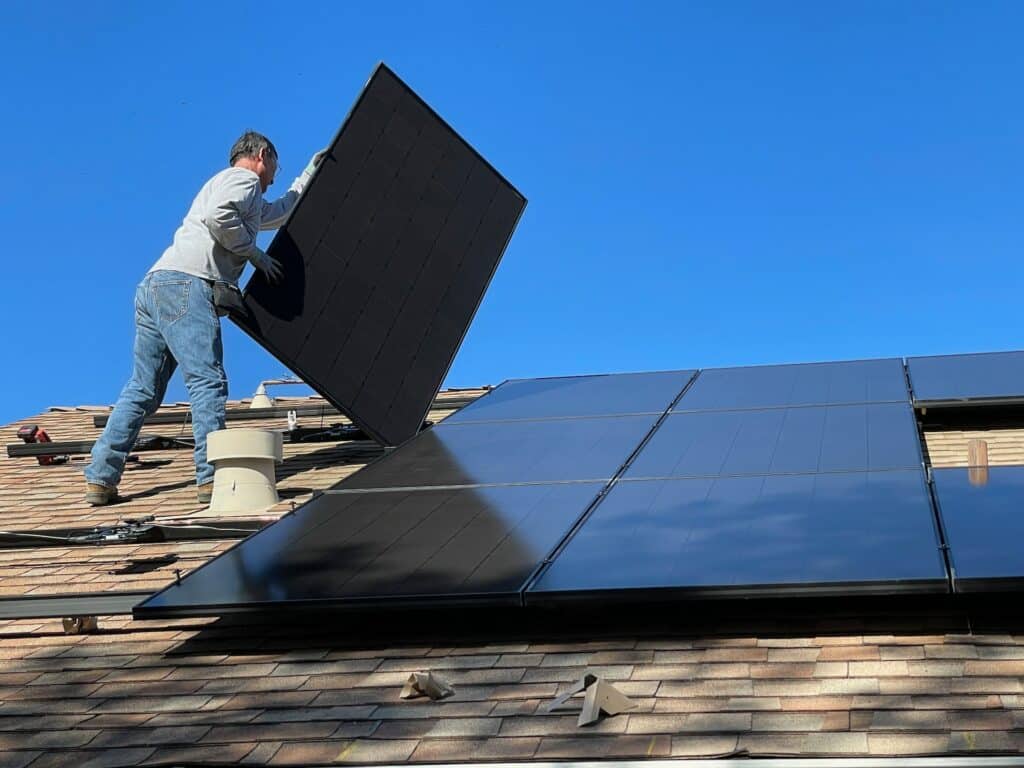
The national average cost of solar panel installation in 2023, taking into account the federal tax credit, is estimated to be around $20,650. This amount may vary based on factors such as system size and location along with the brand of panels chosen for use. For a more specific estimate ranging between $17,430 and $23,870 consider state-by-state comparisons when assessing solar panel installation costs.
National Average Cost
The national average expenditure for a solar panel installation is approximately $20,650 with an approximate rate of $2.95 per watt before incentives are applied. Installing a 5 kW system could cost from $15,000 to around $25,000 depending on the features and components included in the setup like ground-mounting or EV charging stations that can upsurge overall expenses further.
It’s essential to have full knowledge about general costs associated as well as potential extra charges when considering getting your home outfitted with solar panels so you make more informed decisions regarding this type of investment into renewable energy sources.
State-by-State Comparison
The cost of installing solar panels varies drastically across states, from the per watt rate to possible savings as a result of local incentives and how well suited the region is for solar energy. California stands out when it comes to harnessing financial benefits via these installations.
Other places like Hawaii which have higher electricity rates may experience an even greater reduction in their bills. To accurately calculate your state’s particular installation costs regarding size, labor fees and any available discounts through motivation programs, obtaining a personalised quote from a trustworthy provider would be wise.
Incentives and Rebates to Lower Solar Panel Costs
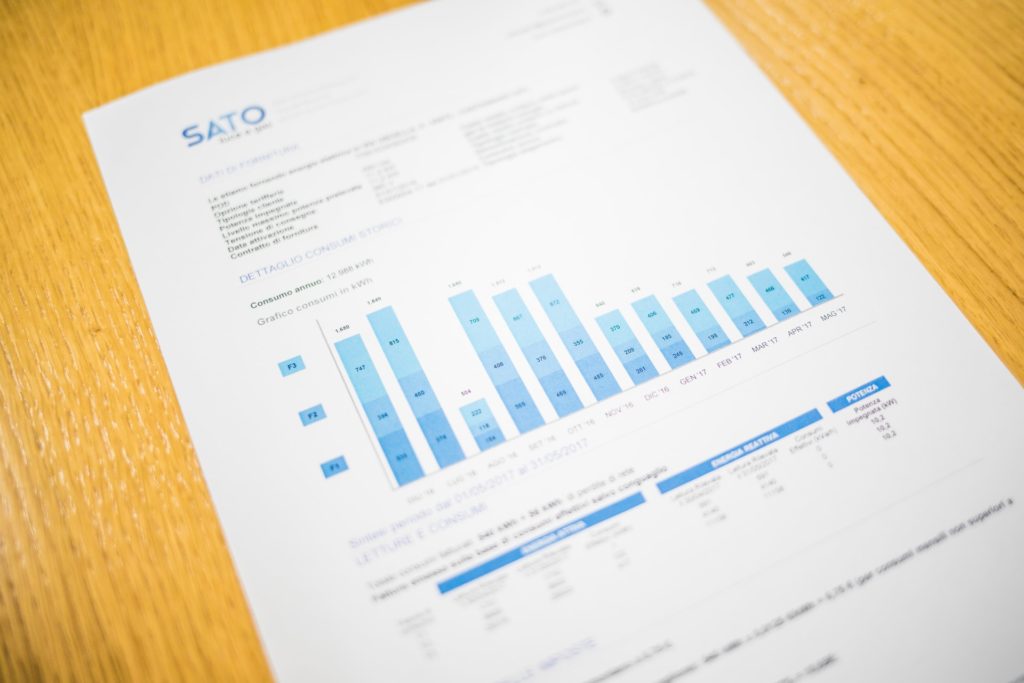
Homeowners can make solar panel installation more accessible and affordable by taking advantage of available incentives. Tax credits, cash rebates, performance-based incentives, and renewable energy credits all lower the cost of solar panels to reduce initial investment while helping homeowners save on their energy bills long term. To this end, the federal government offers a tax credit as well as numerous state and local incentive options that could help you reduce your costs for installing solar panels.
Federal Solar Tax Credit
The federal solar tax credit is an incentive available that can help you reduce the cost of installing solar panels. This incentives offers 30% for installation costs, such as a $25,000 system becoming eligible for up to $7,500 in savings when applied towards your taxes. It’s important not to overlook this benefit while it still applies. Currently lasting through 2032 before potentially being reduced or eliminated after then.
State and Local Incentives
To minimize solar panel installation costs, there are several local and federal incentives available for homeowners. At the national level, the federal solar tax credit can be utilized to reduce expenditure on these systems. On a state or city-wide level, you may also find rebates as well as various forms of exemptions and credits that could help Lower your cost burden when it comes to installing panels in your house.
These solutions enable households not only to save money initially but also have long-lasting effects by reducing dependence on conventional means of energy generation such as electricity companies’ services etc. To gain access to this information best suited for where you live, browse through resources like Unboundsolar’s interactive map or DSIRE ( Database Of State Incentives For Renewables & Efficiency).
Taking advantage of these offers will ultimately lead to decreased outgoings related to opting into having additional technologies present at home, namely more savings resulting from reduced expenses due solely instating Solar Panels!
Financing Options for Solar Panel Installation

If you’re planning on installing solar panels but worry about the upfront costs, there are numerous financing alternatives that can help you accomplish your goals. These include cash purchases, loans for solar energy systems, and PPAs or leases of solar technology.
In this section, we’ll go through each type in more detail so that it is easier to decide which option would best suit your needs.
Cash Purchases
Purchasing a solar panel system with cash is one way to get the most out of your energy savings in the long run, as well as benefit from tax incentives right away. It usually takes between 6-11 years before you can recoup this initial investment.
Although making an upfront payment may not be suitable for everyone’s financial situation, those who are able to do so could see significant returns in time and money – plus no interest or fees like loans or leases would bring – once they have their solar panel up and running.
Solar Loans
For those looking to install solar panels but unable to cover the full cost upfront, a solar loan is an attractive option. Different lenders will offer varying monthly payments and interest rates for these loans. Some are providing zero-down deals with low-interest that have recently become very popular. By financing through a loan, you can still gain access to tax incentives or other benefits without needing immediate capital outlay.
When seeking such funding, researching different providers should be done in order to find the best terms available on their solar panel installations via respective contracts and agreements, from interest rate comparisons down through evaluating various loan options.
Solar Leases and PPAs
Homeowners can enjoy the benefits of solar energy without directly owning a system, thanks to solar leasing and power purchase agreements (PPAs). With these arrangements, it’s possible for third-party companies to fund installation costs as well as manage upkeep needs. Solar leases involve a fixed monthly rate paid by those utilizing the panels while PPAs provide an option for buying any generated electricity at pre-established rates.
Either choice still entails leaving management duties in the hands of specialist organizations, which includes such tasks as ownership or repair matters related to solar systems. It also ensures that all necessary care is taken with regard to keeping each device running up to capacity since no additional expenses are required from homeowners beyond regular installment payments or predefined purchasing prices.
With both alternatives allowing access on their own terms, consumers have options when considering how they want to be involved — either through set fees charged under lease deals or cost savings via bulk buys offered over PPA selections — where everybody wins out in getting maximum value from available resources using whichever plan best fits within individual preferences around budgeting plus environmental responsibility aspects too!
Solar Panel Installation Process and Timeline
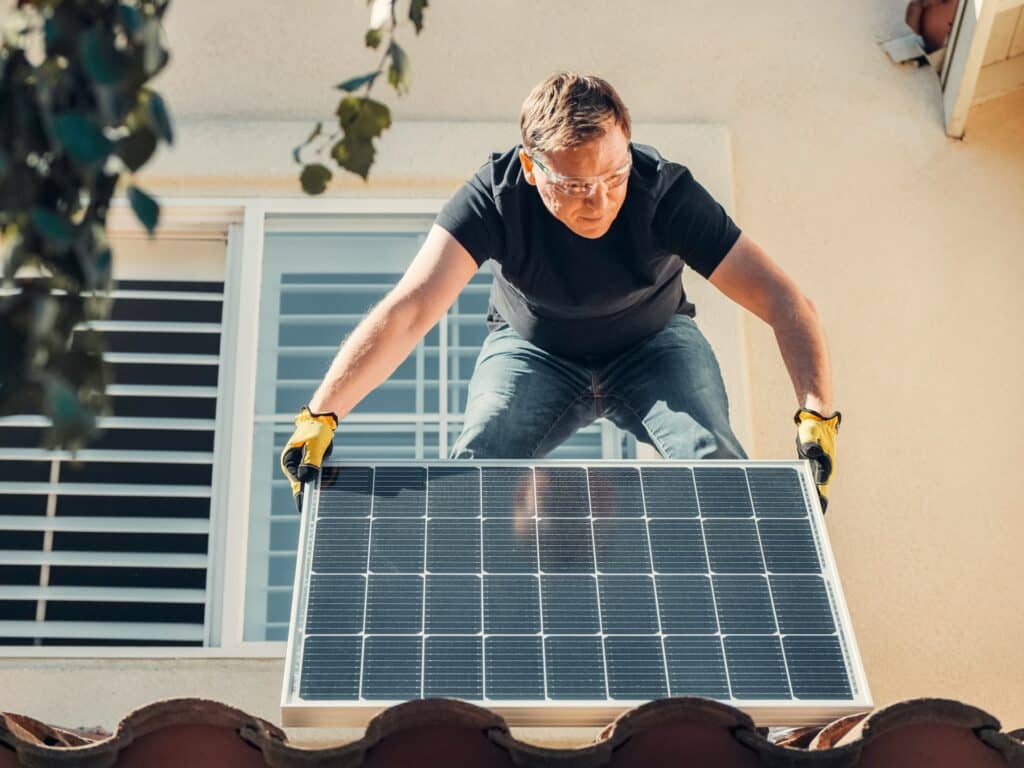
When installing solar panels, the entire process usually takes around a month to three months. This includes all aspects of assessment and planning. Followed by inspections before system activation. To provide insight into each step involved in this journey towards using solar energy, here are the details broken down.
The first phase involves inspecting and evaluating your property for suitability – making sure it gets enough sun throughout the year! Planning is then conducted based on data collected from surveys as well as research to figure out optimal placement with respect to your home or business’s architecture. Installation itself entails setting up mounts (if necessary) where photovoltaic cells can be placed – these will eventually form.
Site Assessment and Planning
Prior to setting up solar panels, an extensive on-site assessment and plan is necessary. This involves evaluating the appropriateness of your property for installing solar panels – including aspects such as roof size, electrical panel status and energy needs. A qualified professional in this domain will typically inspect the main service board, assess any shadows or obstruction points that exist, figure out access to sunlight availability factors associated with shading considerations along with examining site suitability other variables linked to assessing potentials of its related resources concerning solar power output usage.
By implementing a thorough review process and well organized planning method when it comes to installation/setup regarding these efficient photovoltaic components you can be guaranteed that they are optimised within all relevant criteria which apply directly towards ensuring long term savings while also improving overall return investment outcomes (ROI).
Permitting and Documentation
Once the site assessment and planning have been completed, it is time to move on to obtaining permits and completing documentation for solar panel installation. The paperwork involved will likely be handled by your professional solar installer who must also submit applications for incentives available with this type of project. Though a complex undertaking that requires lots of effort, allocating resources towards permit acquisition as well as managing interconnection agreements has an important role in adhering to local codes and regulations. This way you can remain focused on preparation steps leading up to installing the panels themselves while enjoying many advantages associated with having reliable renewable energy sources provided by photovoltaic cells commonly known as ‘solar’.
Installation and Inspection
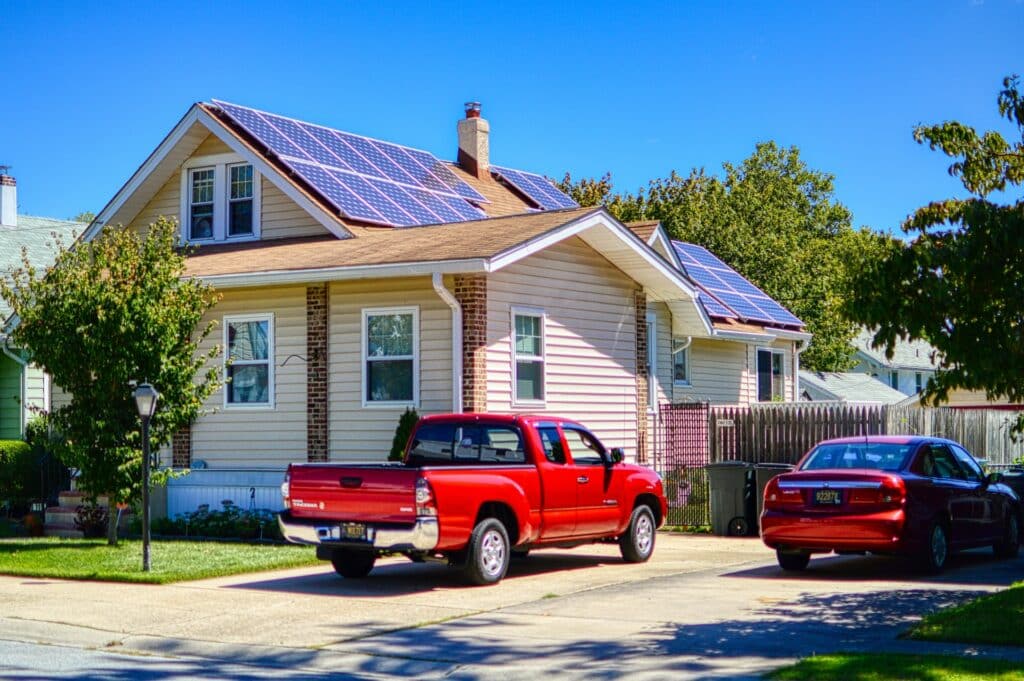
The last step in the solar panel setup process is to actually install and assess your solar energy system. This consists of readying the roofing with racking, mounting wiring, putting down panels and inverters as well as connecting everything together. Throughout installation, your chosen installer will guarantee that all photovoltaic panels are properly connected plus appropriately wired up into your electrical grid.
Once assembly has been finished, there should be some examinations done to make sure adherence with local laws and regulations standards have been fulfilled. These evaluations could entail a final evaluation from the city’s building department along with any other exams mandated by local ordinances being accomplished successfully before activation can take place so clean sustainable power may begin flowing for utilization within homes like yours now that it’s become an active component.
Long-Term Savings and Payback Period
It’s important to consider the returns when investing in solar panels, as it can lead to cost reductions and reduced emissions. To accurately evaluate your return on investment (ROI), you need to factor in both annual and monthly savings along with how much was put into the initial installation of the solar panel system.
In this article, we explore ways for estimating long-term energy savings and calculating an accurate payback period from a newly installed set of solar panels that will lower carbon footprint significantly over time.
Monthly and Annual Energy Savings
Installing solar panels on your home can bring about meaningful savings in both monthly and yearly energy costs. Generating green, renewable power from these systems may even help to eradicate electric bills altogether! On average, you will pay somewhere between 6-8 cents per kilowatt hour, the same rate utilities charged 40 years ago.
By utilizing solar power at home rather than relying solely on electricity supplied by the grid, homeowners gain more control over their consumption while also having fixed fees for energy use. Investing in this type of technology promotes a greener future due to decreased carbon output as well as increased demand for clean sources of energy production.
Payback Period Estimation
The payback period for solar panel installations is typically between 6 and 12 years depending on various factors such as system cost, energy consumption, tax credits available, amount of electricity generated from the system, etc. To work out your estimated return time frame, you need to subtract any incentives or rebates from the total gross expense of setting up a solar panel installation before dividing it by annual monetary benefits including savings made in terms of power plus applicable entitlements and discounts. Knowing your potential payoff timeframe allows you to make educated decisions regarding investing in panels while being able to maximize long-term profit margins. It’s important though that one take into consideration costs related with installing systems along with local rates associated with electrical energy use when calculating expected return periods.
Summary
For those looking to reduce their energy costs and invest in renewable energy, solar panel installation can be a worthwhile decision. Taking into account factors such as system size, the type of panels being installed, location and roof characteristics when considering your own solar power setup will help you make informed decisions that maximize long-term savings.
Financing options are available that makes investing in clean energy more achievable than ever before. Understanding these incentives may grant access to greater financial advantages along with the benefit of having sustainable resources for many years ahead.
Frequently Asked Questions
How much is a solar system for a 2000 sq ft house?
A solar system installation for a 2,000 sq ft home would typically cost about $20,000. This estimation includes the number of panels required (12-34), the energy provided by them (4, 000 watts) and also takes advantage of federal incentives such as the 30% solar tax credit associated with this project.
The amount of power your house requires determines how many panels you need while determining their wattage depends on that same demand level. An enticing benefit when investing in photovoltaic technology is claiming part or all eligible costs with this particular Federal program’s blessing through its dedicated rebate scheme: The Solar Tax Credit!
Do you really save money with solar panels?
The installation of solar panels may result in considerable savings. With the benefit of a federal tax credit and higher property values, you can expect to save up to $25,500 – $33,000 over its entire lifetime from reduced energy costs alone. In other words, there’s no doubt that investing in this technology is an economical move!
How long does it typically take to install solar panels on a residential property?
Typically, installing solar panels on a residential dwelling can take somewhere between one to three months of time until completion. This period includes all necessary procedures from the start up to achieving the fullest potential.
What are the main factors affecting the cost of solar panel installation?
When it comes to the cost of installing solar panels, several factors must be taken into account. These include system size, type of panel used, where they will be situated and whether there are any features on the roof that could impact the roof.
Are there any incentives or rebates available to help reduce the cost of solar panel installation?
Installing solar panels can be costly, but there are incentives and rebates available to help ease the burden. These include federal solar tax credits, state-wide financial benefits, local incentives, and renewable energy credits, which all contribute towards lowering the cost of a new panel system. This makes an investment in this technology more appealing by helping reduce the payback period on expenses related to purchasing these eco-friendly solutions for your home or business.
